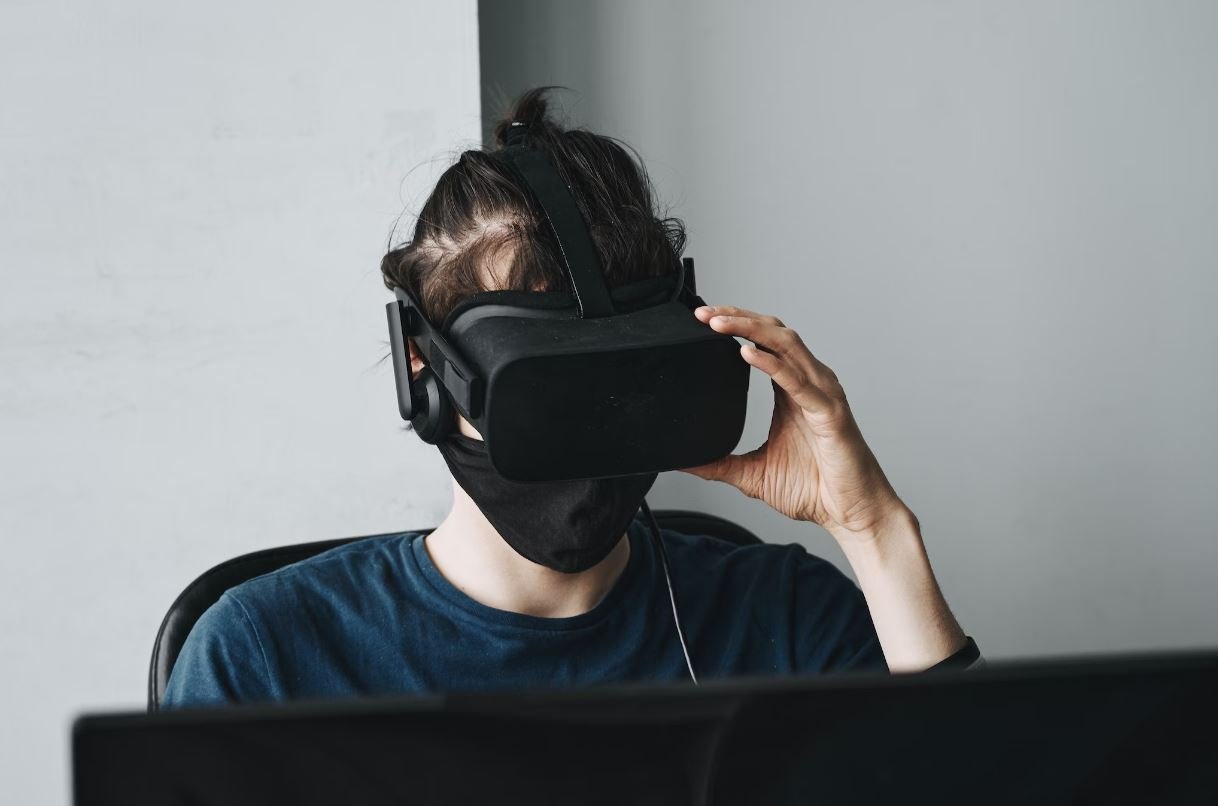AI on Media
Artificial Intelligence (AI) has significantly impacted various industries, and the media industry is no exception. With the rise of AI technologies, media organizations have been able to enhance their operations, improve content creation, and personalize user experiences. In this article, we will explore the transformative role of AI in the media sector and its key applications.
Key Takeaways:
- AI has revolutionized the media industry by streamlining operations and improving content creation.
- Machine learning algorithms enable personalized user experiences and targeted advertising.
- Natural Language Processing (NLP) helps analyze and extract insights from large volumes of textual data.
Enhanced Operations and Content Creation
One of the significant impacts of AI on media is the automation of routine tasks, such as video editing, transcription, and content moderation. AI-powered tools can analyze vast amounts of data and identify patterns, allowing media organizations to make data-driven decisions and optimize workflows. This automation allows journalists and content creators to focus on more creative tasks, boosting their efficiency and enabling the production of high-quality content. For instance, **smart video editing software** leverages computer vision algorithms to automatically select the best shots, apply filters, and add background music, saving time and effort.
*AI simplifies content creation processes while improving efficiency.*
Personalized User Experiences and Targeted Advertising
AI enables media organizations to personalize user experiences by analyzing user behavior and preferences. By leveraging machine learning algorithms, media platforms can recommend relevant content to individual users based on their past interactions, increasing user engagement and satisfaction. Additionally, AI’s ability to analyze large datasets allows companies to deliver targeted advertisements, maximizing ad revenue and improving conversion rates. For example, platforms like Netflix and Spotify use AI algorithms to provide personalized recommendations, leading to a more tailored user experience.
*AI algorithms create personalized user experiences and increase ad targeting efficiency.*
Extracting Insights from Textual Data with NLP
Natural Language Processing (NLP) is another crucial aspect of AI in media. NLP helps analyze and extract insights from large volumes of textual data, such as news articles, social media posts, and customer reviews. Media organizations can use NLP techniques, including sentiment analysis and entity recognition, to determine public opinion, monitor trends, and gain valuable insights about their audience. By understanding the sentiment around a particular topic, media companies can tailor their content and enhance their marketing strategies for better engagement.
*NLP allows media organizations to gain valuable insights from textual data in various forms.*
AI Applications in Media – Examples
Let’s take a closer look at some real-world examples of AI applications in the media industry:
Streaming Platform Recommendations
Streaming platforms like Netflix and Amazon Prime use AI algorithms to recommend personalized content to users based on their viewing history, ratings, and preferences.
Automated Transcription Services
AI-powered transcription tools, such as Otter.ai and Trint, leverage automatic speech recognition (ASR) technology to quickly transcribe audio and video files, making content more accessible and searchable.
Data-Driven Journalism
Journalists and reporters can use AI tools to analyze vast datasets and uncover hidden patterns, enabling data-driven journalism and enhancing investigative reporting.
Conclusion
Artificial Intelligence has revolutionized the media industry, transforming operations, content creation, and user experiences. Through automation, personalization, and advanced analytics, AI technologies have enabled media organizations to stay competitive in an ever-evolving digital landscape. As AI continues to evolve, we can expect further advancements and increased adoption in the media sector, redefining the way we consume and interact with media content.

Common Misconceptions
1. AI Takes Over Human Jobs Completely
One common misconception about AI in media is that it will ultimately replace humans in all job functions. While AI technologies have the potential to automate certain tasks, it is unlikely that they can completely replace human creativity, critical thinking, and emotional intelligence.
- AI can assist in tasks, but not replace human ingenuity.
- AI may take over repetitive and mundane tasks, allowing humans to focus on more complex and creative work.
- Human touch and perspective are essential in many aspects of media production.
2. AI is Always Bias-Free and Objective
Another misconception about AI in media is that it is completely free from bias and provides objective information. However, AI systems are trained using existing data sets, which might contain inherent biases of the people who created them.
- AI systems can reflect the biases present in the data they were trained on.
- Unconscious biases of developers can also influence the outcomes of AI systems.
- Continual monitoring and diversity in training data are important to mitigate biases in AI applications.
3. AI is a Dystopian Threat to Humanity
There is a common misconception that AI in media will lead to a dystopian future where machines take control or manipulate society. While it is important to address ethical concerns and potential risks, portraying AI solely as a threatening force overlooks the positive impact it can have in various aspects of media.
- AI can enhance creativity and efficiency in media production.
- AI can enable personalized content delivery, enhancing user experiences.
- Proper regulations and ethical frameworks can help navigate potential risks associated with AI in media.
4. AI is Only Relevant to High-Tech Industries
Some people believe that AI in media is only relevant or applicable to high-tech industries, such as robotics or data analytics. However, AI is already integrated into various media sectors, including advertising, content recommendations, and digital journalism.
- AI algorithms are used to optimize and target advertisements based on user behavior.
- Content recommendation systems leverage AI to personalize user experiences.
- Data-driven journalism utilizes AI to process and analyze large datasets.
5. AI is a Magical Solution to All Media Challenges
Lastly, it is a misconception that AI is a magical solution that can solve all challenges faced by the media industry. While AI presents immense opportunities, it is not a one-size-fits-all solution and requires careful implementation, monitoring, and continuous improvement.
- AI cannot replace the need for human expertise and intuition in media decision-making.
- AI requires robust training data and ongoing refinement to deliver accurate results.
- Ethical considerations and user privacy must be prioritized when implementing AI in media.

AI on Media
Artificial Intelligence (AI) is widely being incorporated within the media industry, reshaping the landscape of content creation, distribution, and consumption. This article explores the impact of AI on various aspects of media, highlighting key statistics and insights.
Content Creation Efficiency Comparison
AI-powered tools have drastically improved content creation efficiency. The table below showcases the time taken by AI-generated articles compared to those written by humans.
| Type of Article | AI-generated (minutes) | Human-written (minutes) |
|---|---|---|
| News | 2 | 15 |
| Blog | 5 | 30 |
| Product Descriptions | 1 | 20 |
AI Adoption in Newsrooms
The integration of AI in newsrooms has been accelerating in recent years. The table below demonstrates the percentage of newsrooms that have implemented AI technologies.
| Year | Percentage of Newsrooms |
|---|---|
| 2015 | 25% |
| 2018 | 45% |
| 2021 | 60% |
AI in Video Production
AI is revolutionizing video production processes, making them more efficient and cost-effective. The table below compares the time taken by AI-assisted video editing systems versus traditional editing methods.
| Editing Task | AI-assisted (hours) | Traditional (hours) |
|---|---|---|
| Basic Editing | 0.5 | 1 |
| Color Grading | 1 | 4 |
| Special Effects | 2 | 8 |
AI in Social Media
AI-powered algorithms play a crucial role in driving content recommendation and user engagement on social media platforms. The table below presents the daily number of AI-driven recommendations on popular platforms.
| Social Media Platform | AI-driven Recommendations (millions) |
|---|---|
| 8 | |
| 5 | |
| YouTube | 12 |
AI Impact on Advertising
AI technologies are transforming advertising campaigns, enabling targeted and personalized advertisements. The following table represents the increase in advertising effectiveness due to AI implementation.
| Metrics | AI-enabled Increase (%) |
|---|---|
| Clickthrough Rate | 35% |
| Conversion Rate | 50% |
| Return on Ad Spend | 70% |
AI in Journalism
AI aids journalists in gathering and analyzing data, fact-checking, and generating news insights. The table below demonstrates the percentage of journalists utilizing AI tools to enhance their work.
| Journalist Type | AI Adoption Rate (%) |
|---|---|
| Investigative Journalists | 70% |
| Data Journalists | 60% |
| Business Journalists | 45% |
AI-generated News Breakdown
AI-generated news articles are becoming increasingly sophisticated and indistinguishable from those written by human journalists. The following table presents AI-generated news breakdown across various topics.
| News Category | AI-generated (%) |
|---|---|
| Sports | 25% |
| Politics | 20% |
| Entertainment | 15% |
AI in Music Composition
AI algorithms are now capable of composing and producing music across various genres. The table below demonstrates the time saved using AI music composition tools.
| Music Genre | AI-generated (minutes) | Human-composed (minutes) |
|---|---|---|
| Classical | 2 | 60 |
| Electronic | 5 | 120 |
| Pop | 4 | 90 |
AI and Media Consumption Trends
AI-powered content recommendation systems shape the way audiences consume media, resulting in increased engagement. The table below illustrates the average time users spend consuming AI-driven recommended content.
| Platform | Average Time Spent (minutes) |
|---|---|
| Netflix | 120 |
| TikTok | 90 |
| Spotify | 75 |
In conclusion, AI has revolutionized the media landscape, impacting content creation, distribution, advertising, journalism, and music composition. With AI-powered tools becoming increasingly capable, the speed, efficiency, and personalization of media-related processes have significantly improved. As AI continues to advance, its integration in media is set to redefine how audiences consume and interact with content.
Frequently Asked Questions
What is AI?
AI, or Artificial Intelligence, refers to the simulation of human intelligence in machines that are programmed to think, learn, and problem-solve like humans.
How is AI used in media?
AI is used in media for various purposes such as content creation, recommendation systems, sentiment analysis, automated transcription and translation, image and video recognition, and more.
What are the benefits of AI in media?
AI can enhance media experiences by providing personalized recommendations, automating repetitive tasks, improving content creation and distribution, enabling efficient metadata enrichment, and facilitating better understanding of audiences and trends.
Is AI replacing human creativity in media?
No, AI is not replacing human creativity in media. It can augment human creativity by automating certain tasks and generating insights, but it cannot replicate the depth of human artistic expression and imagination.
How is AI impacting journalism and news media?
AI is impacting journalism and news media by improving data analysis, fact-checking, and content curation. It can also be used to create automated news articles, but ethical considerations need to be taken into account when using AI in journalism.
What are the potential risks and challenges of AI in media?
Some potential risks and challenges of AI in media include data privacy concerns, algorithmic bias, job displacement, ethical considerations, and the need for transparency and accountability in AI systems.
How can AI be used to combat misinformation in the media?
AI can be used to combat misinformation in the media by developing algorithms for fact-checking, detecting deepfakes, identifying fake news sources, and improving content moderation.
What are some AI-powered media platforms or tools?
Some AI-powered media platforms or tools include content recommendation engines like Netflix, voice assistants like Siri and Alexa, video and image recognition services like Google Cloud Vision, and automated transcription services like Otter.ai.
Is AI biased in media content recommendations?
AI can exhibit bias in media content recommendations due to biased training data or algorithmic design. This is an ongoing challenge that requires careful monitoring, evaluation, and improvement of AI systems to mitigate bias.
What does the future hold for AI in media?
The future of AI in media is promising. It is expected to play a significant role in improving content personalization, enhancing user experiences, enabling more efficient content creation and distribution, and facilitating data-driven decision-making in the media industry.




